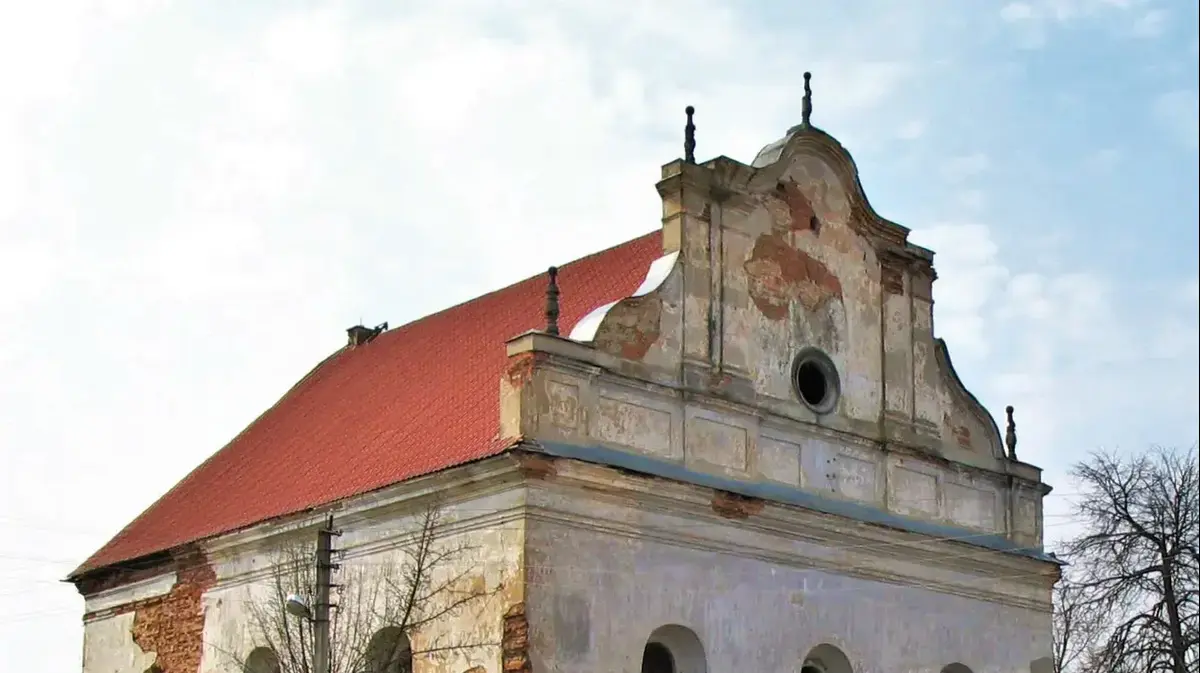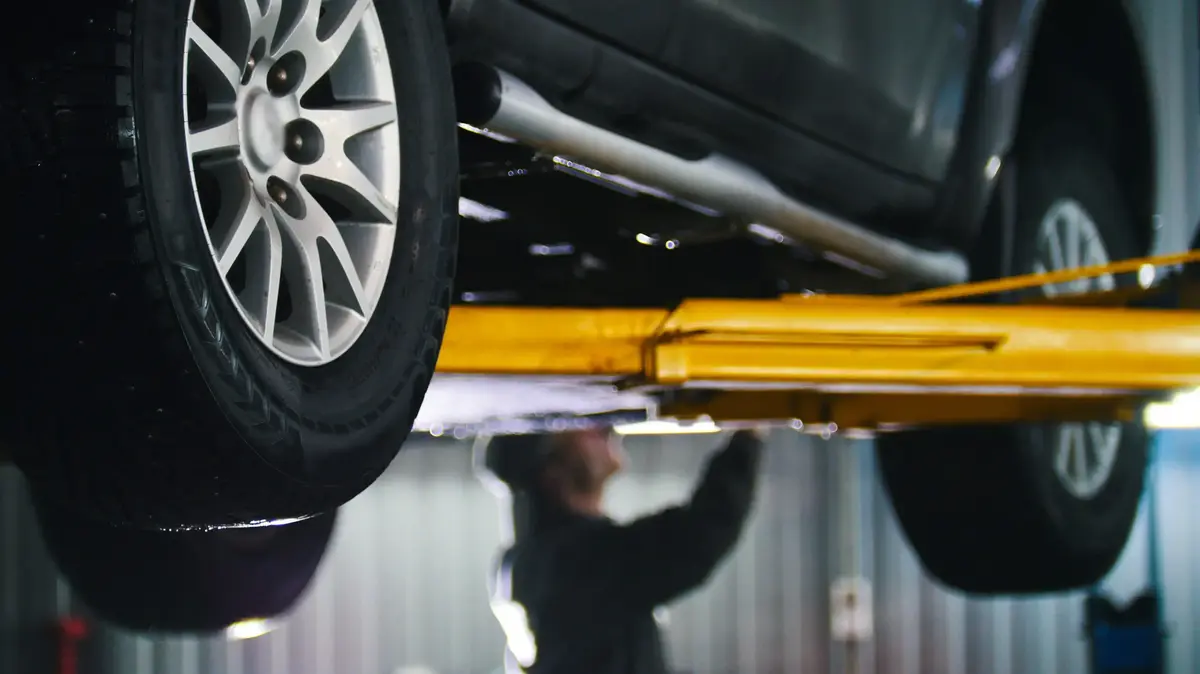news
World news
Europe
At the price of a used car: the struggle to save the historic synagogues in Eastern Europe
Before the Holocaust, there were about 17,000 synagogues in Europe, but today only about 3,300 of them remain, with only about a quarter of them still serving as synagogues.
In collaboration with Christians and Jews, an effort was made to save these sites before they became restaurants or residences.
Tags
Belarus
World War II
Synagogues
holocaust
Jews
JTA, Canaan Lifshitz
Thursday, 25 March 2021, 13:24 Updated: Sunday, 28 March 2021, 17:38
Share on Facebook
Share on WhatsApp
Share on general
Share on general
Share on Twitter
Share on Email
0 comments
$ 2 million for building renovations.
The Great Synagogue in Slonim, Belarus (Photo: Official Website, Wikimedia Commons)
Ilona Reeves fell in love with a 380-year-old matte fall building during a visit to the city of Slonim in Belarus.
In the past, the building served as one of the largest and oldest synagogues in the area.
Reeves, a 40-year-old writer living in Minsk, the capital of Belarus, is a Christian, as are almost all residents of the country.
Activities in the synagogue were stopped following World War II.
Three-quarters of Slonim's residents were Jews at the time.
Almost all of them were murdered by the Nazis.
Reeves looked at the crumbling building, which had been used for years as a commercial building, and saw in it something she wanted to save.
“When I stood outside the Great Synagogue of Slonim I felt small, I felt like we were all dwarfed by such architectural structures representing a long-standing tradition,” she said.
Reeves sold her apartment in Minsk and in December bought the synagogue for ten thousand dollars, which she paid to the Slonim municipality.
The only condition set by the municipality was that the purchaser renovate the building.
The synagogue in the salons is one of several similar buildings for sale in recent years in Eastern Europe, and Reeves is one of a small group of people who feel a commitment to preserve them.
"Various buildings, including very old buildings that used to be synagogues, appear on the market in Eastern Europe on a fairly regular basis and at very reasonable prices," explained Michael Mail, who founded the Jewish Heritage Foundation, which helps renovate Jewish historic buildings across Europe.
"But there is often a problem - the renovation is complex and expensive," he added.
Reeves learned this about her flesh.
It is now trying to raise two million dollars for the renovation project, which it hopes to complete within ten years, although experts believe the operation could take 25 years.
More on Walla!
Germany: A 95-year-old woman is accused of aiding and abetting the murder of thousands of people in a Nazi camp
The future of Holocaust research in Poland depends on a lawsuit against two historians
The technology in shoes that will save you from back and knee pain
Vitebsk city located just 200 km northeast of Minsk, the municipality offered free skeleton of the Great Synagogue in the name of Lubavitch, where she used to pray the family of the painter Marc Chagall - anyone who would be willing to rebuild it.
In 2016 opened cafe called "Coffee Synagoga" area of the old synagogue in Trnava, Slovakia. a few years earlier procurement contractor is not a Jew, Simon Stepanek, the building is crumbling, to rebuild it in conformity with conservation exacting of the municipality and opened it as a prestigious holiday.
economically, there was logic investing, explained Stepanek. rehabilitation occurred millions of dollars and the cafe did not return the investment, even before the outbreak of an epidemic of sources. but he did it "to give up something in the living Jewish community here," said Stepanek. "I think it's beautiful."
the idea of giving Buildings in exchange for their restoration are now accepted in Europe as a way of rescuing historic buildings that are at risk since most of the Jews who used to visit them perished.Before the Holocaust, there were about 17,000 synagogues in Europe.Today only about 3,300 buildings remain.
More on Walla!
Holocaust researchers who were forced to apologize are struggling with the engineering of consciousness in Poland
To the full article
Most of the synagogues that still stand intact are located in Eastern Europe, but after World War II many of them were nationalized by the communist regime.
The Jewish communities dwindled in the Holocaust as a result of the wave of immigration that came after the fall of Communism, and in places such as Slonim and Vitebsk they disappeared almost completely.
Their institutions remained government-owned.
In Belarus, where a dictatorial regime rules and has no laws to return the confiscated Jewish property to its owners, local authorities have ruled that the buildings left by the Jewish community must be preserved, but have not allocated resources for this purpose.
Structural change in buildings for preservation is difficult and sometimes even illegal and requires a special permit from the state or local authority.
The protected status of the buildings often causes a decrease in value since contractors have no way to make a profit if they purchase them.
The former synagogue in the western town of Austrino is up for auction, with the minimum price being only $ 40.
The new owners will have to meet certain conservation requirements but will also be able to use parts of the building for the purpose of erecting warehouses or residential units.
"I felt we were all dwarfed by such architectural structures that represent a long-standing tradition" (Photo: Official Website, Wikimedia Commons)
In 2019, a 19th-century building in the city of Portava, formerly a synagogue, was sold for $ 6,000.
The buyer turned it into a warehouse.
A similar situation prevails in Western Europe.
In 2018, a 200-year-old synagogue in the eastern Dutch city of Deventer became a restaurant after the local Jewish community, numbering only a few members, could no longer afford to maintain it.
Local authorities in Eastern Europe returned much property that the communist regime confiscated from Christian and Jewish religious communities.
The Christian communities have been able to return to them, rehabilitate or sell many buildings that have been restored to them, sometimes with funding from the Vatican and the Orthodox Church.
The same happened to property returned to local Jews, although support for them is much smaller.
In 2002, the municipality of Breuysk in eastern Belarus returned to the local Jewish community a synagogue that served as a military warehouse and later as a tailor's shop.
The building, which is the only one of the 42 synagogues in the area that is still standing, was restored and inaugurated again as a synagogue thanks to a fundraising campaign by the energetic local rabbi, Shaul Hababo.
More on Walla!
"For the first time in my life, my teeth were checked": Behind the children's homes in Europe after the Holocaust
To the full article
In Moldova, Rabbi Shimshon Isaacson hopes to carry out a similar project in the yeshiva complex and synagogue named after Rabbi Yehuda Tirilson, a large complex located in the commercial area of Chizino, from which only its outer walls remain.
In other cases, however, the Jewish communities, which inherited historic synagogues, were unable to preserve them to the satisfaction of the community members.
Earlier this month, part of the roof of Brody's Great Synagogue in western Ukraine collapsed, and the building dates back to the 18th century.
In 2006, another part of the government-owned building collapsed and is listed as a conservation building.
The building was in a dilapidated condition even earlier, following an attempt by German soldiers to blow it up during World War II and the remains of the building are now supported by scaffolding.
In Brody, where thousands of Jews lived before the war, no one from the Jewish community remains today.
"This is our heritage and we have a responsibility towards it"
Today, about one hundred Jews live in the Stato Mara in northern Romania.
Following negotiations on the restoration of Jewish property in the 1990s, the community now owns no less than 129 cemeteries and four synagogues, which are crumbling because the community cannot afford to renovate them.
"The buildings and hundreds of tombs we need to preserve are depleting our resources," explained property manager Paul Deshey in an interview in 2017 between the sloping walls of the city's main synagogue, an impressive nineteenth-century structure.
"On the other hand," he added, "we cannot ignore it. This is our heritage and we have a responsibility towards it."
The same is true of the Hevra Tehillim prayer house in Krakow, Poland.
In 2016, the community-owned building was leased - with traditional decorations on its walls - and a nightclub called "Hevra" was opened there, despite protests from some members of the Jewish community who claimed it would demolish the building.
Reeves, who purchased the building in the living rooms without even seeing its interior, said she purchased it because of its beauty.
It imagines a space for cultural or community activity, in which Judaism will occupy a central place.
As someone who makes sure to visit the church, having grown up during the communist regime, the motive for her venture is religious.
"I always dreamed of building a church, even a small one, made of wood," says Reeves.
"Thanks to the synagogue project in the living rooms, I feel like I'm already on the way. Or maybe I've already fulfilled my goal."
Share on Facebook
Share on WhatsApp
Share on general
Share on general
Share on Twitter
Share on Email
0 comments














